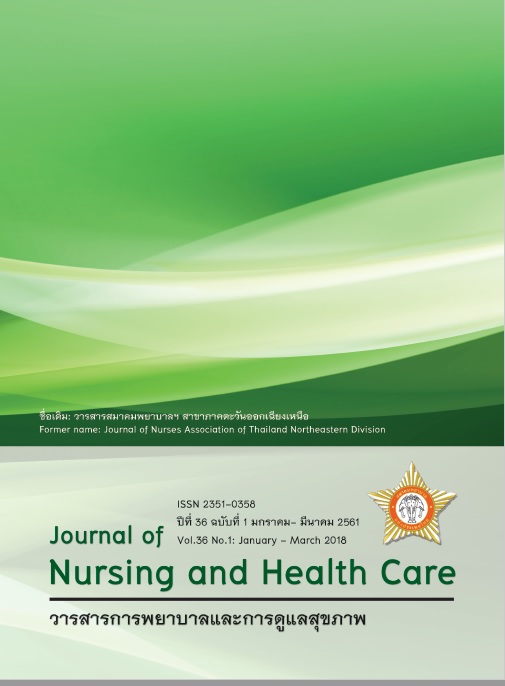การพัฒนาระบบการพยาบาลผู้ป่วยภาวะติดเชื้อในโรงพยาบาลเลย Nursing Care System Development for Sepsis Patients at Loei Hospital
บทคัดย่อ
This action research aimed to develop nursing care system for sepsis patients and evaluate the outcomes of
system development in Loei hospital. The study participants were 199 head nurses and registered nurses from
14 units and 177 sepsis patients. The study was conducted during July 2017–February 2018. Quantitative data
was collected though questionnaire administration including sepsis guideline adherence evaluation, sepsis care
outcome report, and nurse satisfaction questionnaires. Qualitative data was collected by in-depth interview and
focus group discussion. Kemmis & McTaggart’s action research design was used including 2 cycles of 4-phases
implementation which were planning, action, observation and reflection.
The first cycle development showed that the usual nursing care system for sepsis patients was not
effectively detect and plan for sepsis care in a timely manner. Consequently, the Shock Index (SI) was added into
nursing care system to increase sensitivity of sepsis detection and post infection monitoring. Additionally, sepsis
care knowledge refresh session was provided for head nurses and registered nurses. Timeline for sepsis nursing
activities was limited to 30 minutes from sepsis detection to physician notification, 30 minutes from sepsis
detection to fluid resuscitation, and 1 hour to antibiotic administration after prescription. Adequate fluid resuscitation
was limited to 3 hours after doctor prescription. In addition, 4-hourly vital sign and SI assessment and 4-hourly
urine output record were added to nursing care system. The newly developed care system was notified to all
nurses involving sepsis patient care. The second cycle development included fast track medication request in
collaboration with pharmacists, classification of close monitoring high risk group in general units, adjustment of
nurse staff to care for sepsis patients by senior or expert nurses with low assigned cases, and mixed-staffing with
nurse assistants for vital and SI assessment and patient aids for 4-hourly urine record. Lastly, the essential
medical supply and equipment for sepsis care were provided adequately.
Finding from nursing care system development demonstrated that sepsis detection increased from none to
91% physician notification of sepsis detection. Percentage of septic shock in sepsis patients decreased from 19.6%
to 8.3%. Time to delay shock increased from an average of 8.3 hours to 24.6 hours. The mortality rate
associated with septic shock decreased from 50% to 20%. Overall satisfaction of care system development and
utilization among head nurses and registered nurses was high. Additionally, the adherence of nursing guideline
utilization was good in every unit. Consequently, it is suggested that the nursing care system for sepsis patients
at Loei Hospital should be employed to increase sepsis care effectiveness.



